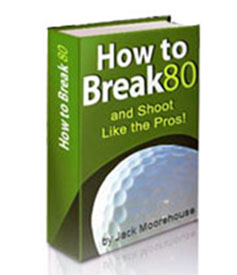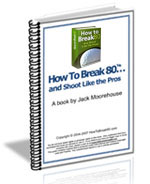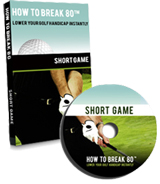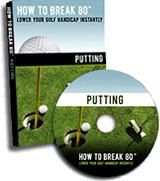|
A Tale of Two Putters- Isao Aoki vs. Nick Price
By Jack Moorehouse
Putting represents nearly half of all the strokes you take during a round of golf. So it's not surprising to find players looking to sharpen their putting skills whenever they can or trying tips things to be successful. The better putter you are, the lower your golf handicap, as I tell golfers who take my golf lesions.
Because of its bearing on your golf handicap, putting has caused more inventiveness in search of perfection than anything in the game. Players have all sorts of styles and movements, all unique to the individual. Despite these innovative efforts, one thing remains true: there's no substitute for a sound putting stroke.
Below we describe the putting technique of two professional golfers-Isao Aoki and Nick Price. They've adopted different putting styles, yet both are considered excellent putters.
The Setup
Japan's Isao Aoki posses a superb putting stroke locked into a strange and individual style. Nevertheless, he is renowned putter. In fact, putting is probably the best part of his game. Aoki addresses the ball with the top of his putter high in the air. His hands are low and he crouches over significantly.
Nick Price' style, on the other hand, is more classic. His technique is based on a locked left wrist and a shoulder-dominated stroke. At address, he keeps his shoulders square to the intended line, and his hands over or just ahead of the ball. He crouches slightly over the ball, but not nearly as much as Aoki.
Despite the differences in style, both players do one thing all great putters do at address-they keep their eyes directly over the ball. It's the most important ingredient in the setup, irrespective of a person's height, build, or style. Keeping you’re eyes directly over the ball and turning your head allows a direct view down the line to the hole, without any need to move the shoulders out of alignment.
The Stroke
Aoki is a touch putter, so he uses his hands more than his shoulders, and takes the club back steeply, with the right hand controlling the takeaway. At the top of the backswing, his putter is high off the ground-an unusual position for a good putter. Nevertheless, it works well for Aoki. His stroke is smooth and rhythmical.
Price's technique is based on a shoulder-dominated stroke. His arms, shoulders, and putter move away from the ball as a single unit, with the hands remaining passive. He keeps his wrist firm during the stroke. And he strikes on the upstroke. Price uses more of a pendulum motion than Aoki, swinging the putter smoothly and rhythmically back and forth.
Making a smooth, flowing stroke is not a problem for most players, witness the golfers who take golf lessons from me. Many have nice fluid strokes. The problem arises when a ball is introduced. The ball for whatever reason hampers the putt. A good drill to help eliminate this problem is to start by taking a normal practice stroke. Then address the ball, close your eyes, and repeat the stroke-letting the ball get in the way. The drill makes the real stroke more like the practice one.
The Follow-Through
During the follow-through, Aoki brings the head of the putter back into a square position at impact. His head remains perfectly still throughout the stroke. Aoki remains virtually motionless afterwards, careful that the slightest movement doesn't affect his putt. His head stays still except to follow the ball well after the stroke.
Price keeps his left wrist locked in position through the hitting zone and into the follow- through. He accelerates the putter-head through impact and makes sure his follow- through is as long as his backswing. He, too, keeps his head as steady as possible through the stroke. And he keeps his eyes fixed on the spot where the ball was well after the stroke.
Despite their different styles, both players remain practically motionless after the putt is made. It is imperative to making a good putt. Lifting your head too soon when putting can throw off your putt. The Show Me The Money Drill we covered in last week's golf tips is great for this flaw.
The Show Me the Money drill works for three reasons. It forces you to keep your eyes steady, helping to stabilize your whole body. It prevents you from lifting out of your stance prematurely. And because you're focused on the coin and not the ball, it inclines you to make a nice clean stroke through the ball.
Conclusion
If you want to lower your golf handicap, you need to improve your putting. Nearly half of the strokes made during a full round of golf are putts. Cutting down on your putts will lower your scores and golf handicap. Of course, not everyone will have the same putting style. But one thing remains true: there's no substitute for a sound putting stroke-irrespective of how it looks.
Jack
Moorehouse is the author of the best-selling book "How
To Break 80 And Shoot Like The Pros." He is NOT a golf pro, rather a
working man that has helped thousands of golfers from all seven continents lower
their handicap immediately. He has a free weekly newsletter with the latest
golf tips, golf lessons and
golf instruction.
|
Tools To
Help Your Game!

eBook

Physical Book

Audio Program

Short Game DVD

Driver DVD

Putting DVD
|